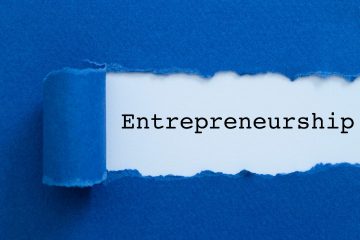Silicon Valley is the world’s most famous tech hub, but it did not start out that way. The rapid development of Silicon Valley offers good news to other cities and regions hoping to replicate its success. Research by Endeavor Insight draws three lessons from Silicon Valley’s story and believes decision makers can utilize them to cultivate high-growth companies in their own communities.
1. Great companies can develop in unlikely and challenging places.
The birth of Silicon Valley can be attributed to the eight co-founders of Fairchild Semiconductors and their supporters. In 1955 William Shockley, one of the inventors of the semiconductor, left AT&T in Boston and opened up Shockley Semiconductor near his hometown in Mountain View, California.
The Bay Area had no access to capital, talent, or customers at this time, forcing Shockley to secure financing from outside the region and travel across the country to meet promising graduate students. His search yielded three PhDs from MIT, a PhD and professor from CalTech, two engineers from New York, and one local PhD from Stanford. Though before the team could start pursuing customers, they quickly learned Shockley was a terrible boss. He was quick to insult the team and lacked trust. All eight employees simultaneously quit within the year.
The eight researchers had sacrificed promising careers to work together in this new industry. Most of them had moved their families a great distance and bought homes in the region. Refusing to give up, they managed to secure funding from an east coast banker, Arthur Rock, and a serial entrepreneur, Sherman Fairchild. Rock’s fundraising solved the team’s capital problem, and Fairchild’s connections took care of finding customers, landing them contracts with IBM. In 1957, “Fairchild Semiconductor” launched in Palo Alto and the rest was history.
2. A few entrepreneurs can make a large impact.
The expansion of the local computer chip industry began when Fairchild employees were inspired by the eight co-founders and left the firm to launch “spin-off” businesses. In 1959, the firm’s general manager left to start Rheem Semiconductor. Two groups of employees resigned a few years later to found the computer chip firms Signetics and Molectro. The eight co-founders supported their employees’ new endeavors through mentorship and funding.
The firm’s eight co-founders were directly responsible for the development of over 30 local computer chip companies in less than 14 years. These new firms formed the core of a new local industry that employed a total of 12,000 people. The story of Fairchild demonstrates how a small number of successful founders can spawn many fast-growing companies.
3. The Entrepreneurship Acceleration Cycle
This framework for Silicon Valley’s success has been dubbed “The Entrepreneurship Acceleration Cycle” and consists of the following four steps:
1. Ambition
The cycle begins when entrepreneurs seek to build large, scalable businesses in their local communities. Entrepreneurs require a strong desire to grow and a preference for living in the local area.
2. Growth
Ambitious founders must have access to talent, financing, and customers. They must also have the ability to properly utilize these resources to achieve significant growth.
3. Commitment
After a company exits, successful founders must stay in their local area and share their resources with the next generation of entrepreneurs.
4. Reinvestment
Founders should inspire former employees to launch their own companies, acting as mentors and investors for the second generation of companies to grow.
The story of Silicon Valley shows us that great things can come from the most unlikely of places if we are willing to cultivate it. Even the most talented entrepreneurs like Fairchild’s eight entrepreneurs can benefit greatly from some assistance. At Endeavor, we recognize the value of this story and dedicate ourselves to connecting fast-growing upcoming entrepreneurs to high-impact entrepreneurs who have succeeded in scaling their companies, as well as through access to mentors, talent, capital and markets.
In the case of the Fairchild Semiconductor team, Sherman Fairchild’s experience as a serial entrepreneur guided the eight founders and connected them to the appropriate clients that kickstarted the firm’s massive success. Our Endeavor Entrepreneurs are ambitious, utilize the tools necessary to grow, are committed to supporting the next generation of entrepreneurs, and inspire others to follow suit. Together, we lead the creation of entrepreneurial hubs in 37 growth markets around the world.
Research for this blog post can be found on Endeavor’s Insight Report, “How did Silicon Valley Become Silicon Valley?”. Additional reporting provided by Endeavor staff member Eric Marroquin.


